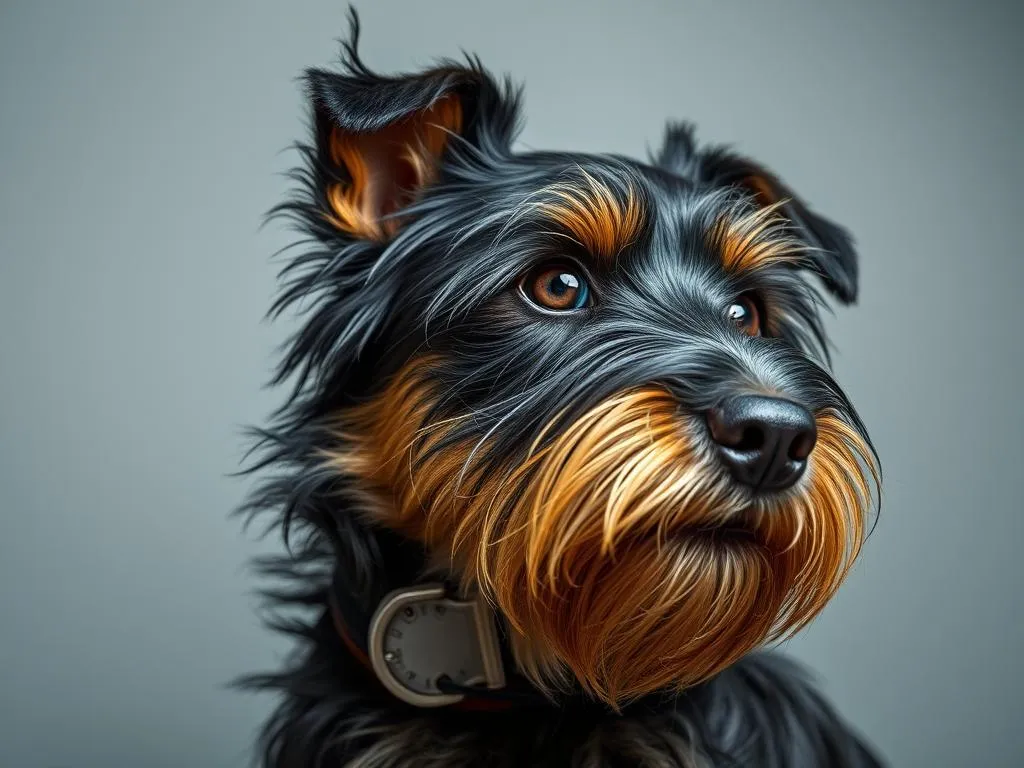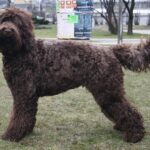
I. Introduction
Dog breeds represent a fascinating aspect of canine diversity, showcasing a variety of characteristics that cater to different human needs and lifestyles. Each breed has its own unique traits, temperament, and care requirements. Understanding these differences is essential for anyone considering adding a dog to their family.
One breed that stands out in both appearance and personality is the Tenterfield Terrier. This breed is not only charming but also possesses qualities that make it an excellent companion for various households. In this article, we will delve deep into the world of dog breeds, focusing particularly on the Tenterfield Terrier and what makes it a notable choice for dog enthusiasts.
II. The Importance of Choosing the Right Dog Breed
Choosing the right dog breed is crucial for ensuring a harmonious relationship between the dog and its owner. Various factors play a role in this decision, including lifestyle, family dynamics, and health considerations.
Lifestyle Considerations
Potential dog owners need to assess their activity levels. For those with active lifestyles, breeds that require ample exercise are ideal. Conversely, individuals who lead more sedentary lives might prefer breeds that are content with a few short walks each day. Additionally, space is a significant consideration; those living in apartments may find smaller breeds, like the Tenterfield Terrier, to be more suitable compared to larger breeds that require more room to roam.
Family Dynamics
The dynamics of a household also play a role in breed selection. Families with children should consider breeds known for their gentle temperament and patience. On the other hand, singles or elderly individuals may prefer quieter dogs that require less maintenance. The Tenterfield Terrier is known for being great with kids, making it a fantastic option for families.
Allergies and Health Concerns
For those with allergies, hypoallergenic breeds are often recommended. While the Tenterfield Terrier is not classified as hypoallergenic, it does have a relatively low-shedding coat that may be suitable for some allergy sufferers. Understanding common health issues associated with different breeds is also essential in making an informed decision.
III. Overview of Dog Breeds
Dog breeds can be classified into several categories based on their characteristics and roles.
Classification of Dog Breeds
- Working Dogs: These breeds are bred to perform specific tasks, such as guarding or pulling sleds.
- Sporting Dogs: Known for their energetic nature, these breeds excel in hunting and retrieving.
- Herding Dogs: These dogs are skilled at managing livestock and often display a strong instinct to herd.
- Hound Dogs: Renowned for their keen sense of smell and tracking abilities.
- Toy Dogs: Small in size, these dogs are often companions and lap pets.
- Non-Sporting Dogs: A diverse group that doesn’t fit neatly into other categories.
- Terriers: These breeds are known for their feisty nature and were originally bred for hunting vermin.
Popular Dog Breeds
Some popular breeds within these categories include:
- Labrador Retriever (Sporting)
- German Shepherd (Working)
- Beagle (Hound)
- Poodle (Non-Sporting)
- Chihuahua (Toy)
- Jack Russell Terrier (Terrier)
These breeds vary significantly in traits and ownership statistics, with Labradors often ranking as the most popular breed in many countries.
IV. In-Depth Look at the Tenterfield Terrier
The Tenterfield Terrier is a breed that is often overlooked but possesses several admirable qualities. Understanding its history, physical characteristics, temperament, and care requirements is vital for potential owners.
Origin and History
The Tenterfield Terrier hails from Australia, with roots tracing back to the early 19th century. Originally bred as a hunting companion and vermin controller on farms, this breed showcases the characteristics of both working and companion dogs. Its development was influenced by various terrier breeds brought to Australia by early settlers.
Physical Characteristics
The Tenterfield Terrier is a small to medium-sized dog, typically weighing between 10 to 12 pounds and standing about 10 to 12 inches tall at the shoulder. They have a short, smooth coat that can come in various colors, including white, black, and tan. Their well-proportioned bodies and alert expressions contribute to their overall charm.
Temperament
The temperament of a Tenterfield Terrier is one of its most appealing features. These dogs are known for being affectionate, energetic, and intelligent. They thrive on companionship and are eager to please their owners. Their playful nature makes them great with children, while their alertness also makes them good watchdogs.
Care and Maintenance
Caring for a Tenterfield Terrier involves regular grooming, but their low-shedding coat requires minimal maintenance. A weekly brushing session is usually sufficient to keep their coat healthy. These dogs require daily exercise to maintain their physical and mental health, including walks and playtime. Regular vet check-ups are essential to monitor their health, particularly as they may be prone to certain genetic conditions.
V. Training and Socialization
Training and socialization are critical components of raising a well-adjusted Tenterfield Terrier.
Importance of Early Training
Starting training early is beneficial for the Tenterfield Terrier. Basic commands and obedience training should begin as soon as you bring the puppy home. Socializing them with other pets and people helps to ensure they grow up to be well-rounded adults.
Training Techniques
Positive reinforcement methods work best with this breed. Rewards such as treats and praise can motivate them to learn commands effectively. Common challenges, such as stubbornness, can be addressed through patience and consistency during training sessions.
VI. Common Health Issues
Being aware of potential health concerns is vital for every dog owner.
Health Concerns in Tenterfield Terriers
While generally healthy, Tenterfield Terriers can be prone to specific genetic predispositions, including patellar luxation and certain skin conditions. Regular veterinary check-ups can help catch these issues early.
Routine Veterinary Care
Routine veterinary care, including vaccinations and health screenings, is crucial for maintaining the overall health of a Tenterfield Terrier. Regular check-ups can help in preventing common ailments and ensuring your dog lives a long, healthy life.
VII. Tenterfield Terrier in Popular Culture
The Tenterfield Terrier has made its mark in popular culture, albeit not as prominently as some other breeds.
Representation in Media
While not commonly featured in blockbuster movies or major television shows, the Tenterfield Terrier has garnered attention through social media platforms where enthusiasts share their stories and experiences. This breed’s unique characteristics and endearing nature have made it a favorite among dog lovers.
Community and Events
Various dog shows and breed clubs celebrate the Tenterfield Terrier and allow owners to connect with one another. These communities provide a platform for sharing advice and experiences related to the breed and its care.
VIII. Conclusion
Understanding dog breeds is essential for making informed decisions about pet ownership. The Tenterfield Terrier presents an appealing option for many households, thanks to its affectionate nature, intelligence, and adaptability.
When considering adopting a dog, it’s vital to evaluate the breed characteristics, lifestyle compatibility, and overall care requirements. The Tenterfield Terrier is a wonderful breed for families, singles, and seniors alike, making it a versatile choice for potential dog owners.
IX. FAQs (Frequently Asked Questions)
What is the average lifespan of a Tenterfield Terrier?
The average lifespan of a Tenterfield Terrier is typically between 12 to 15 years, with proper care and regular veterinary check-ups.
Are Tenterfield Terriers good with children?
Yes, Tenterfield Terriers are known for their playful and affectionate nature, making them excellent companions for children.
How much exercise does a Tenterfield Terrier need?
A Tenterfield Terrier requires at least 30 to 60 minutes of exercise daily, including walks and playtime to keep them healthy and happy.
What are common behavioral traits of a Tenterfield Terrier?
The Tenterfield Terrier is intelligent, energetic, and eager to please. They are known for their loyalty and playful demeanor, making them great family dogs.
Where can I find a reputable Tenterfield Terrier breeder?
To find a reputable Tenterfield Terrier breeder, consider reaching out to local breed clubs, attending dog shows, or searching online directories that list recognized breeders.
In conclusion, the Tenterfield Terrier is a breed that deserves recognition for its unique qualities and adaptability. Whether you’re a first-time dog owner or an experienced enthusiast, understanding the characteristics of this breed can lead to a rewarding companionship.









